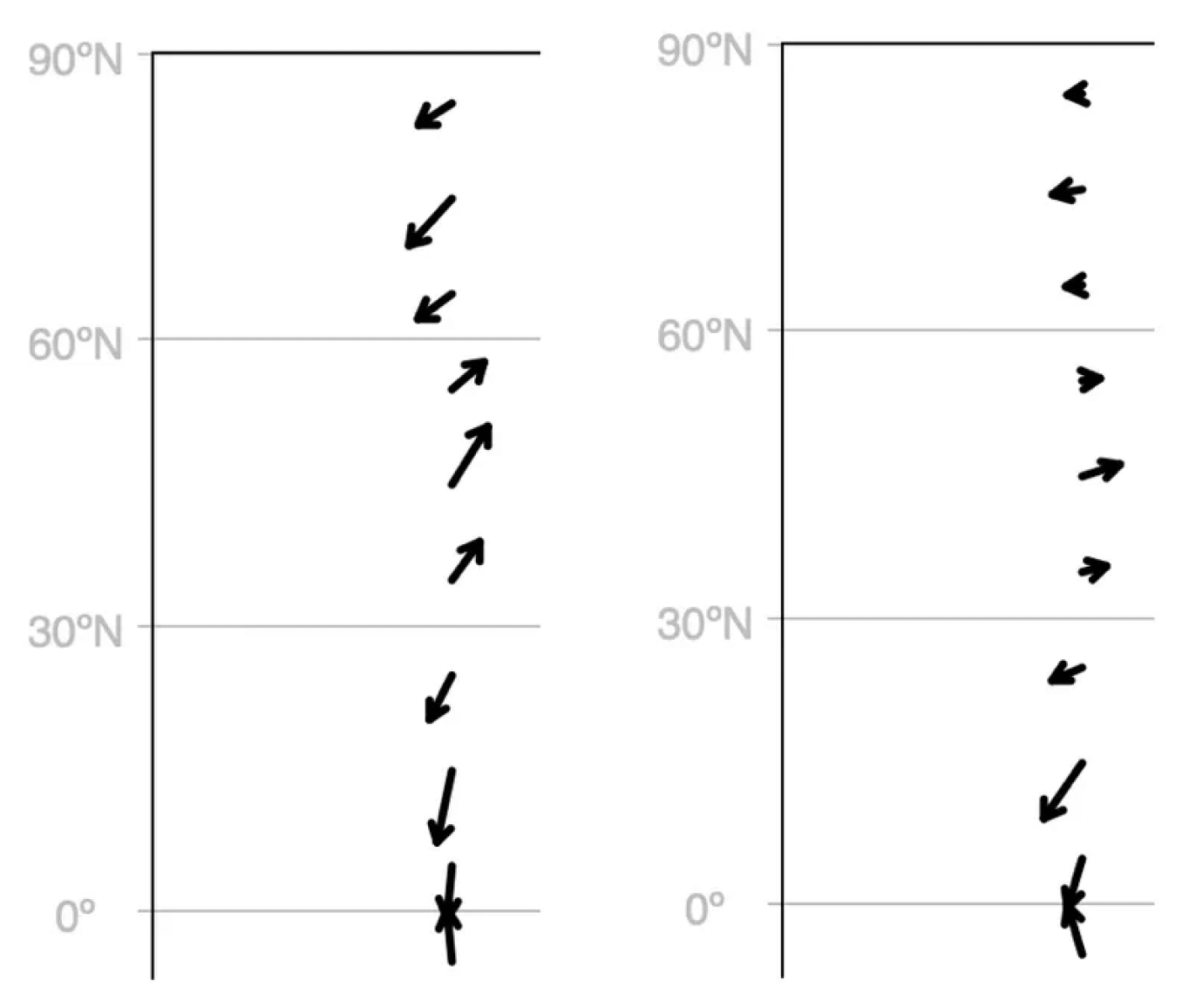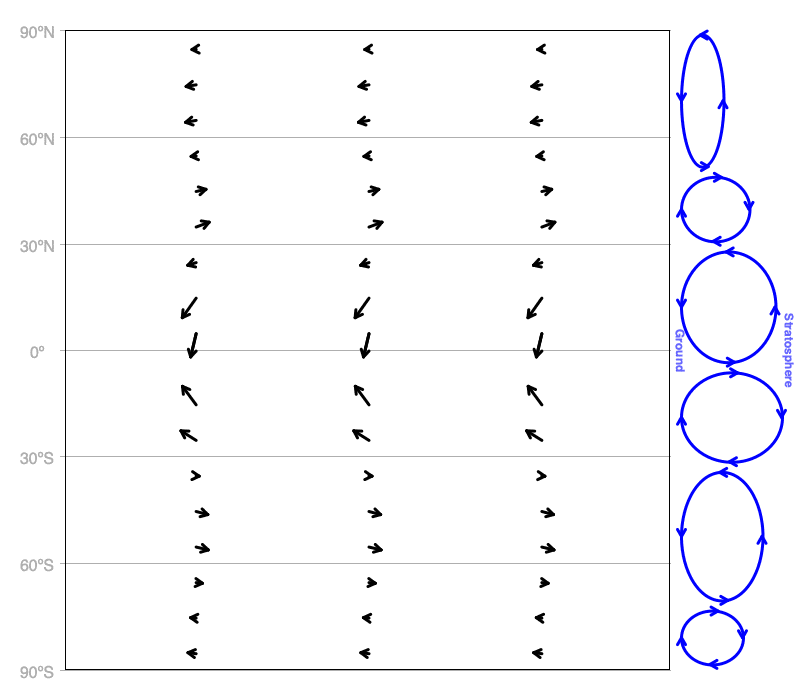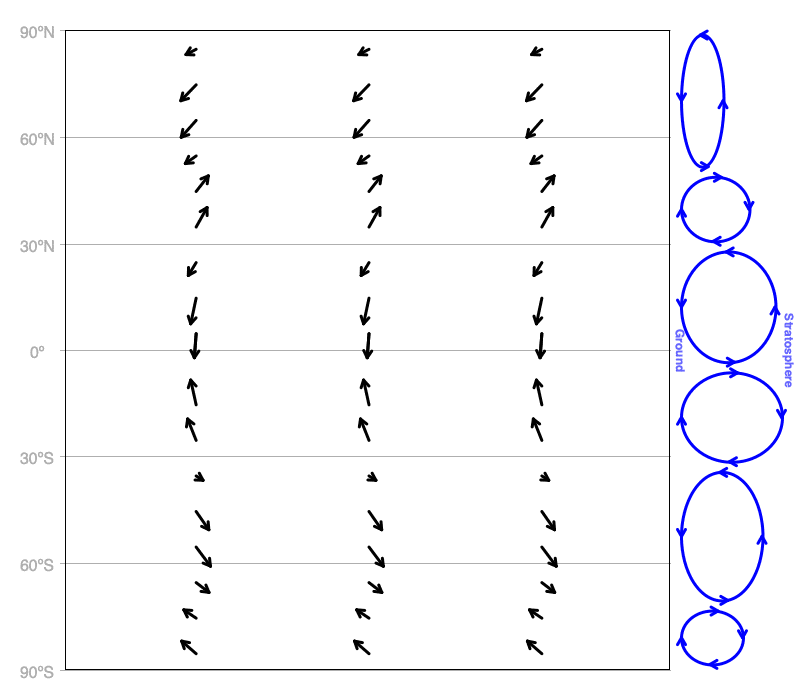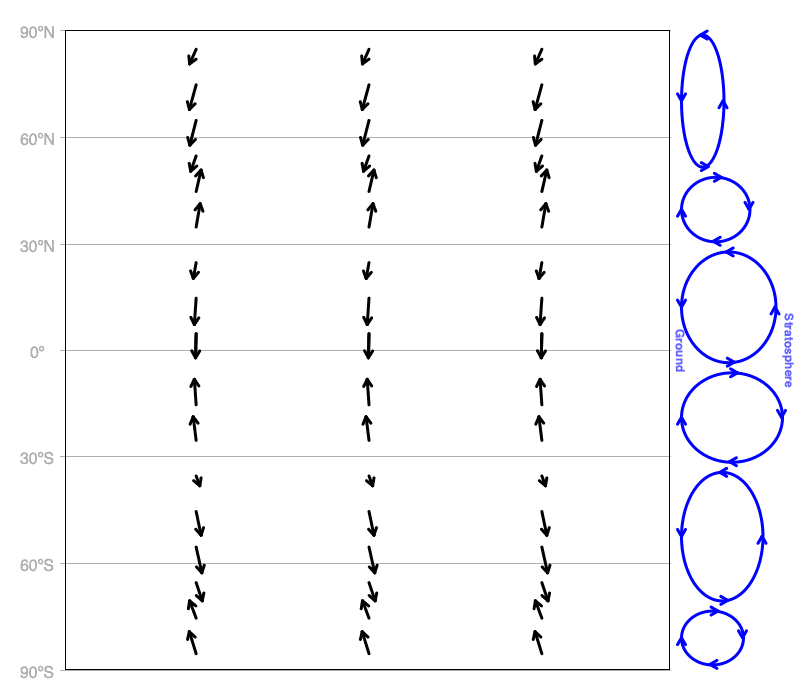Global Winds Through Earth’s History
The Earth is 4.5 billion years old, and there have been some amazing changes to the planet over this time. To start with, our solar system formed from the coalescing of a gas and dust cloud (see a movie for excellent visualizations of this process). The transformation of the kinetic energy of these coalescing solid particles to heat melted the materials on impact, so when the Earth formed, it was completely molten. But Earth wasn’t the only planet to form – there were up to 20 planets in our newly born solar system, but these collided over time. One collision of a protoplanet with Earth created our moon, and this has been helped stabilize Earth’s rotation, in particular, its obliquity (see the Sun-Earth Connection and Star-Planet Connection).
When the moon formed, Earth made a revolution every 6-8 hours. This rapid rate of rotation would have significantly changed how the winds moved in our atmosphere since the Coriolis force depends on how fast Earth rotates. But the moon’s gravity created tides on Earth, which generated the friction that slowly slowed Earth’s rotation. Today, Earth takes 24 hours to complete a revolution (actually it is 23 hours 56 minutes 4.1 seconds). Today’s winds behave differently than in the past. And since the Earth keeps slowing, they will continue to change. Use the Earth, Wind, and Forces software to explore possible global wind patterns throughout Earth’s history. Note: This is only one variable that affects wind, but it has a very significant impact.

All other factors being equal, typical Northern Hemisphere winds over the ocean for today (left) and when the moon formed roughly 4.5 billion years ago (right) when the Earth was spinning much faster.

Global winds if the Earth rotated three times faster than today. Note that this uses the present-day temperature gradient and three-cell global circulation pattern, both of which may not have existed early in Earth’s history.

Generalized global winds presently on Earth. The months shown are January, April, July, and October. April and October are a month after the equinoxes, so the maximum heating is close to the equator. During July, one month after the Northern Hemisphere’s summer solstice, the upwelling air has shifted to roughly 10ºN. During the Southern Hemisphere’s summer, which is near peak during January, the upwelling air has moved close to 10ºS. See the Sun-Earth Connection for details of seasonal heating patterns.

Global winds if the Earth rotated three times slower than today. Coriolis force decreases as a planet’s spin slows, so airflow is more direct between the latitudes. Winds transport heat between the Tropics and the Poles (advection), so the more direct flow would change the temperature gradients between them, possibly altering the global circulation patterns. See the feedback processes in the Systems section to think about how Earth would change with different rates of rotation.
Continue to Explore Winds
Use the desktop app, Earth, Wind, and Forces, to explore global winds on Earth presently, in the past, and in the future. Go to the Software page to download a version for Macs or PCs.

0 Comments